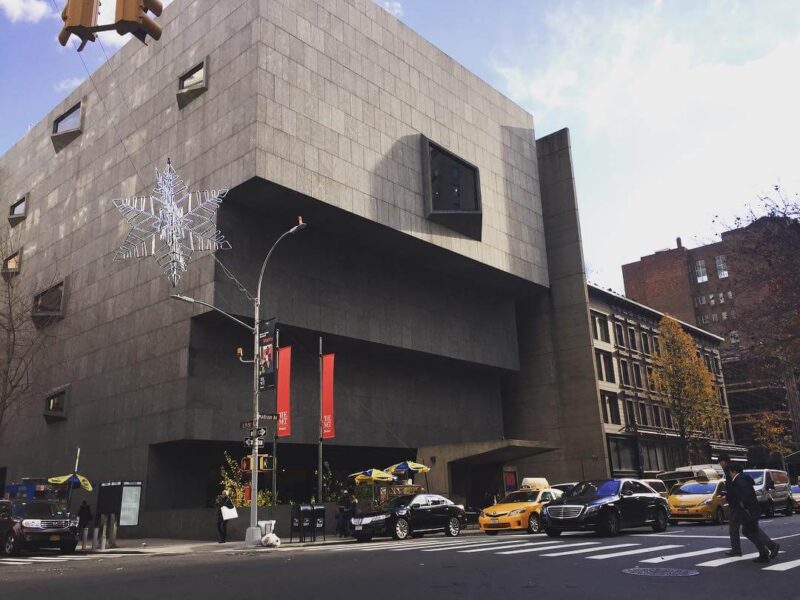945 Madison Avenue, or the “Breuer Building,” stands out from its surroundings with its distinctive reverse ziggurat shape. This building, of course, was designed by Marcel Breuer. It opened in 1966, originally serving as the home of the Whitney Museum. Let’s learn more about what makes this building so iconic.
A Building Designed to Be Experimental and Controversial

Marcel Breuer and partner Hamilton P. Smith were commissioned by the Whitney Museum of Art to design a building to house the museum’s collections and offices. The museum did not call for a structure that would be immediately liked or understood by everyone.
In fact, the commission brief stated that it should be “assertive, even controversial.” The brief also required the structure to feature “monumentality,” but still be “as human as possible.” All of these requirements were in keeping with the museum’s philosophies about art.
Marcel Breuer & Associates rose admirably to the challenge, designing a structure evocative of ancient ziggurats—but turned upside-down. When it opened in 1966, it indeed generated the controversial reception the museum sought.
Architectural Features of the Breuer Building
Construction on the Breuer Building took place between 1964 and 1966. This makes it newer than the Solomon R. Guggenheim Museum designed by Frank Lloyd Wright. That is relevant, because the Guggenheim opened in 1959, also in Manhattan, and likewise can be described as an upside-down ziggurat, though a round one.
The shape of the Breuer Building adds an interesting contrast with many others in New York City. Like those structures, it features straight lines and right angles. But the upside-down ziggurat shape is almost like an inverted version of the architectural setbacks that can be seen on the Art Deco buildings in Manhattan.

Part of what makes the building look so monolithic is how few windows it has. Aside from some glass facing on the west side, it is almost entirely concrete. The majority of the illumination comes from the lights installed inside.

Usually, part of the purpose of windows is to provide illumination. But these windows with their protruding, angular concrete frames were not needed to bring in the light. Their purpose was to help keep the museum from feeling stifling and enclosed, and to serve as decoration.
Can the Breuer Building be called “Brutalist?” That depends on who you ask. The Metropolitan Museum of Art said “no,” as the building’s color scheme diverges from what is typical in brutalism. Plus, Breuer didn’t consider himself a Brutalist architect.
On the other hand, the massive geometric concrete forms certainly fit within the stylistic expectations of Brutalism. It may be that they were simply a better choice than steel and glass for this type of project. Nevertheless, the resulting building is at the very least arguably Brutalist.
The Breuer Building Today
The Breuer Building has changed functions several times since its construction. After housing the Whitney Museum’s collections, it briefly became the Met Breuer from 2015 through 2020, when MOMA leased it. From 2021 through 2024, it became the Frick Madison, housing the Frick Collection. Following an agreement to buy the building from the Whitney Museum, Sotheby will soon place its headquarters inside.
Notably, Sotheby intends to renovate the interior. While the structure is listed in the National Register of Historic Places, this does not protect the interior from an overhaul. Thanks to efforts by Docomomo and other preservation groups, however, it looks like the city may protect the lobby, stairs, and the rest of the interior from major modifications.
If you enjoyed this post, you may also like The Wassily Chair and How to Recognize Bauhaus Architecture. And of course, don’t forget to follow us on Instagram, Facebook, Pinterest and YouTube for more Atomic Ranch articles, house tours, and ideas!












